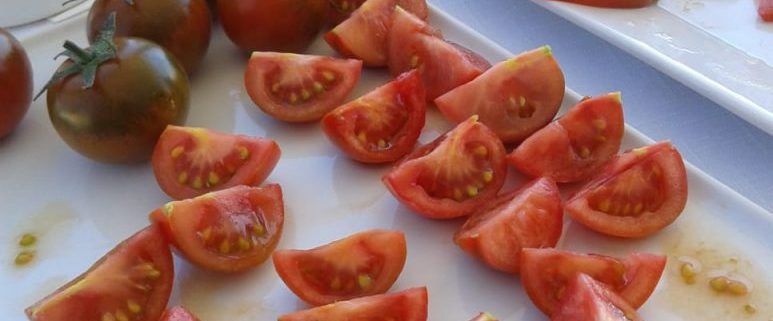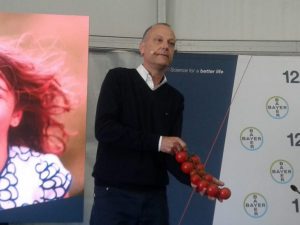Bayer, the company that whispers tomatoes
On the occasion of the celebration of its 120th anniversary, Bayer has opened the doors of its Cellular Biology Research Center of San Nicolás (Almería), specialized among other horticultural crops, in tomato.
By Marga López, agrifood journalist
The year 2018 has been a historic year for Bayer. After completing the acquisition of Monsanto, the company has made a qualitative and quantitative leap in the agricultural sector, adding resources that place it at the moment as a leader in the horticultural segment.
We have a clear example in terms of infrastructures. Bayer now has five research centers at the highest level: four of them dedicated to research and improvement of horticultural varieties, three in Almería for crops under greenhouses and one in Murcia for open air; and a fifth in Brenes (Seville) for field development on crop protection.
It was precisely the Cell Biology Research Center of San Nicolás (Almería), the place chosen by Bayer to present its financial results for 2018 and open the doors to a group of specialized media, among them eCA Fruits, whose director Gissele Falcón had the opportunity to visit.
For Bayer, three are the pillars on which their daily work is based: infrastructures, efficiency and sustainability, and human talent, and this was demonstrated in the day that we were able to share with them: “Among all our research centers, we have more than 40 hectares dedicated to varietal research and development, 125 people among scientists, breeders and technicians, and the best technology to make one of our maxims a reality: to offer solutions for producers, traders, distribution and consumers “, explained Francisco Berenguel, manager of the center of San Nicolás, moments before visiting the cell biology laboratory and the phytotrons (laboratory designed to study the influence of climatic conditions on the development of plants).
The importance of genetics
But feeding the world safely and sustainably is not an easy task, as Jan Barten, a Dutch researcher and tomato breeder, explained to us. Barten made a brief presentation of what genetic research entails and the advantages of working with water to achieve plant materials that meet the needs of the entire varietal chain: “The genetic map of tomato has 30,000 genes, that of man 20,000 , which allows us to get an idea of how difficult is the varietal selection and the multiple genetic combinations that we can achieve to find the ideal tomato variety “, Barten detailed, who continued stating that” all the work we develop in these research centers It has a great importance for other producing regions with characteristics similar to those of southern Spain, hence the international nature of the research we are doing here. ”
Jan Barten, Dutch researcher and tomato improver
Jan Barten has been in our country for more than 25 years, and is well aware of the genetic difficulties involved in presenting productive, profitable, resistant varieties with flavor and commercial life, we could say that he is the man who whispers tomatoes at Bayer.









